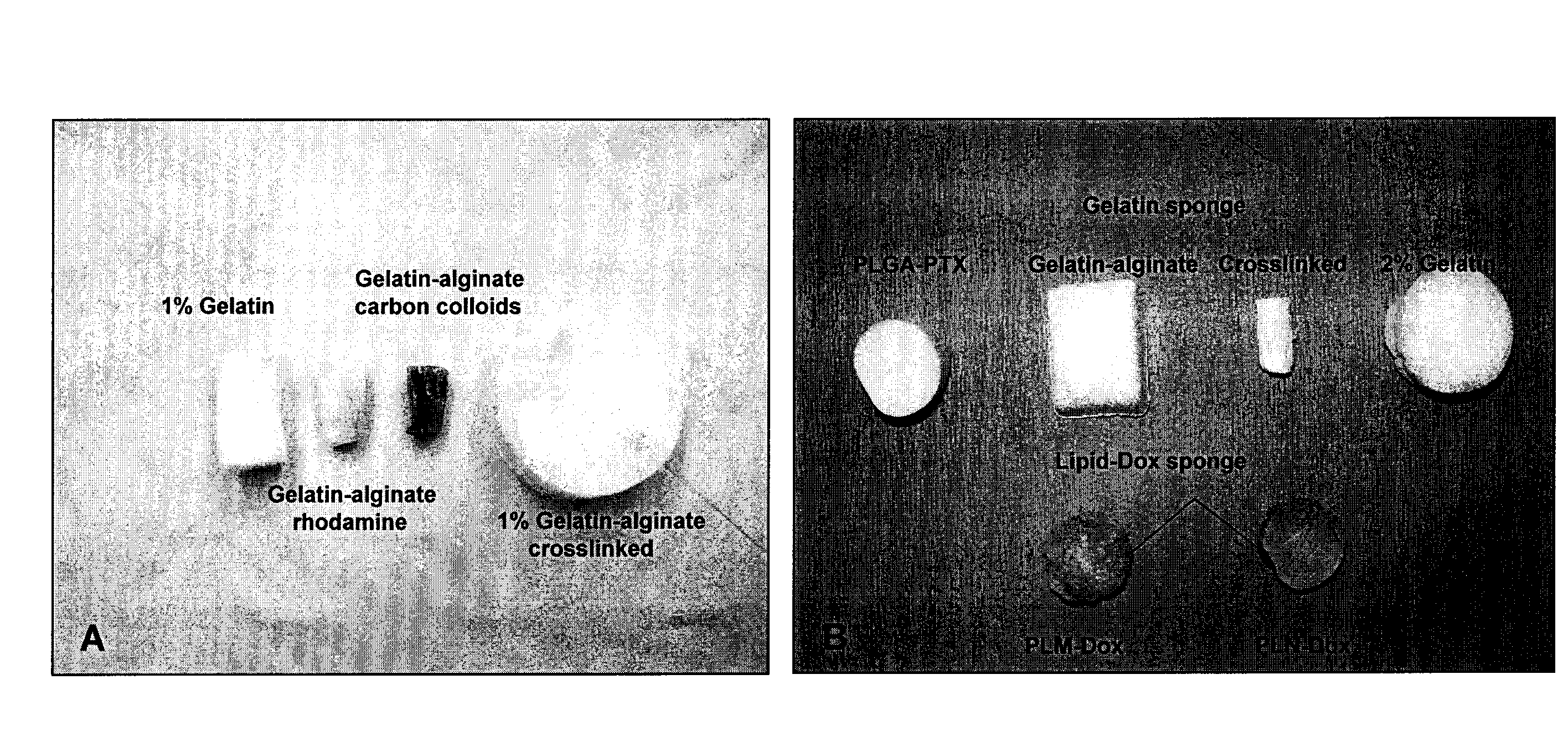Methods and devices for lymphatic targeting
a lymphatic and targeted technology, applied in the direction of antibacterial agents, capsule delivery, organic active ingredients, etc., can solve the problems of early disease who have undergone potentially curative surgery still have a significant incidence of recurrence and subsequent death, and cancer deaths in both men and women
- Summary
- Abstract
- Description
- Claims
- Application Information
AI Technical Summary
Benefits of technology
Problems solved by technology
Method used
Image
Examples
example 1
Intrapleural Lymphatic Distribution of Various Species of Particulates
[0136]Investigation of intrapleural lymphatic distribution of various species of particulates has been conducted in rat models (Liu J et al Lung Cancer 2006; 51(3):377-86). The model systems consist of healthy rats, rats following pneumonectomy, and rats bearing orthotopic lung cancer to simulate clinically relevant scenarios. Particle suspension was administered into the pleural cavity for investigation. Activated carbon (charcoal) particles were first used as a tracer to demonstrate lymphatic distribution of particulates following intrapleural administration. Results from macroscopic examination, light microscopy and transmission electron microscopy (TEM) showed that carbon particles with a broad size range were taken up by regional lymphatics and lymph nodes. To determine the contribution of the lung to lymphatic uptake of these particles, intrapleural administration of carbon particles was carried out immediat...
example 2
Size Impact on the Lymphatic Distribution of Particles after Intrapleural Administration
[0137]A major factor in lymphatic particle distribution is particle sizexxxvi. Aminopolystyrene particles were radiolabeled to assess the size impact on particle uptake in the thoracic lymphatic system. Aminopolystyrene particles of three sizes, i.e. 0.29 μm (small), 2.18 μm (medium), and 11.2 μm (large) were directly radiolabeled with 111Indium (In). The labeling efficiency was 68.9±2.1%, 81.9±3.2%, 61.2±4.3% for small, medium and large particles respectively. The stability of 111In-aminopolystyrene was determined in both saline and plasma obtained from rats. The results show that 111In-aminopolystyrene radiolabeling is stable for at least 72 h.
[0138]In vivo biodistribution study of 111In-aminopolystyrene was performed in rats with left side intrapleural administration. Four groups of rats (4 / gp) were used to examine the size effect on the lymphatic uptake. Three groups of animals were treated w...
example 3
Synthesis and Characterization of PLGA, PLGA-PTX Microspheres
Preparation of PLGA and Paclitaxel Loaded PLGA Microparticulates
[0141]PLGA microspheres were fabricated using spray dry technique according to Mu L et al.xxxviii with some modifications. In brief, a laboratory scale spray-drying was carried out by using the Buchi™ mini spray dryer B-191 (Buchi™ Laboratory-Techniques, Switzerland) with a standard nozzle (0.7 mm diameter) to prepare paclitaxel-loaded PLGA microspheres. The operating conditions were set as follows: inlet air temperature 54° C., outlet temperature 43° C., spray flow control (700 NL / h), pump setting at feed spray rate 4.0-4.5 ml / min, atomization pressure 6 bar (90 PSI), aspirator setting level (100%). PLGA, PTX, were dissolved in an appropriate volume of DCM, (the total concentration of the material matrix and drug in the organic solution was ˜2%; 2.0 g PLGA / 100 ml DCM; PLGA:PTX=1:0.08 w / w), then stirred at room temperature using a magnetic stirrer until all co...
PUM
| Property | Measurement | Unit |
|---|---|---|
| particle size | aaaaa | aaaaa |
| size | aaaaa | aaaaa |
| time | aaaaa | aaaaa |
Abstract
Description
Claims
Application Information
 Login to View More
Login to View More - R&D
- Intellectual Property
- Life Sciences
- Materials
- Tech Scout
- Unparalleled Data Quality
- Higher Quality Content
- 60% Fewer Hallucinations
Browse by: Latest US Patents, China's latest patents, Technical Efficacy Thesaurus, Application Domain, Technology Topic, Popular Technical Reports.
© 2025 PatSnap. All rights reserved.Legal|Privacy policy|Modern Slavery Act Transparency Statement|Sitemap|About US| Contact US: help@patsnap.com



